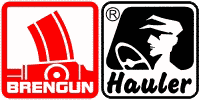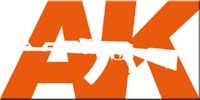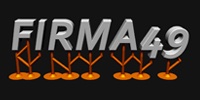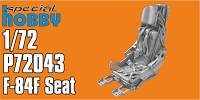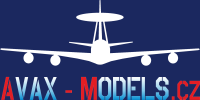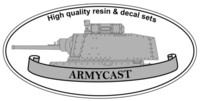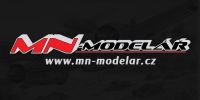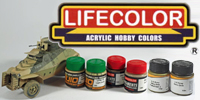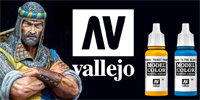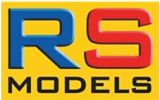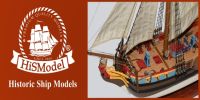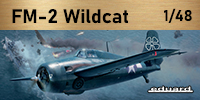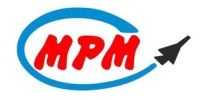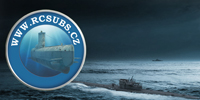Ukončení provozu typů J-7E a JJ-7A u 132 letecké brigády.
MiG-21 - vše o Fishbedu, nejen o Eduardu
Re: MiG-21 - vše o Fishbedu, nejen o Eduardu
Zdar všichni. Nemate někdo podklady na rumunské nebo bulharské MiG-21PF ještě s hvězdičkama? Ideálně ne stříbrný…
Diky
Diky
-

Jarda Špaček - Příspěvky: 3223
- Registrován: 19 črc 2004, 14:45
- Bydliště: Čehovice u Prostějova
Re: MiG-21 - vše o Fishbedu, nejen o Eduardu
Napiš Tangovi,ten by mohl mít. Myslím že něco z toho bylo kdysi v našich sadách na VS Mig-21.
-

Martin Černý 'Černoch' - Příspěvky: 22608
- Registrován: 16 črc 2004, 13:52
- Bydliště: Česká Bříza
Re: MiG-21 - vše o Fishbedu, nejen o Eduardu
Teda Já mám zlé tušení,že u Bulharů to byly jen PFMky ,které nosily kamufláž a hvězdy. PFky jsem viděl v provozu vždy jen stříbrné. Vím o jediné v kamufláži z hvězdama ,ale ta stojí v muzeu v Plovdivu.
Muzeum Plovdiv Mig-21PF ,,bílá 20"
puvodní zbarvení
Muzeum Plovdiv Mig-21PF ,,bílá 20"
puvodní zbarvení
-

Martin Král - Příspěvky: 2771
- Registrován: 02 pro 2005, 20:55
- Bydliště: Hradec Králové
Re: MiG-21 - vše o Fishbedu, nejen o Eduardu
Koukal jsem do sbírky fotek a jediný bulharský PF v kamufláži je ten z muzea v Plovdivu, jinak všechny jsou v barvě plechu. Kamufláž se u Bulharů objevuje až u PFM, ale tam je to spíš dané tím, že většina bulharských PFM pocházela z přebytků VVS SSSR.
U rumunských to je také jednoduché - všechny rumunské MiGy-21 s hvězdami byly buď v barvě plechu, nebo přestříkané hliníkovkou, nebo světle šedé.
U rumunských to je také jednoduché - všechny rumunské MiGy-21 s hvězdami byly buď v barvě plechu, nebo přestříkané hliníkovkou, nebo světle šedé.
Jaroslav 'Tango' Hátle
účetní mafie SPL Liberec
účetní mafie SPL Liberec
-

Tango - Příspěvky: 5188
- Registrován: 12 dub 2005, 15:51
- Bydliště: Liberec
- cmiroslav
- Příspěvky: 336
- Registrován: 12 dub 2011, 12:33
- Bydliště: Praha 5
-

Martin Král - Příspěvky: 2771
- Registrován: 02 pro 2005, 20:55
- Bydliště: Hradec Králové
Re: MiG-21 - vše o Fishbedu, nejen o Eduardu
V roce 1986 probíhala jednání o spolupráci Brazílie a Číny v oblasti letectví ,která vyvrcholila tajnou misí 6ti příslušníků FAB ( Força Aérea Brasileira ) , kteří se v prosinci 1986 vydali cestou přez Londýn do Pekingu otestovat nabízený Chengdu J-7M .
-

Martin Král - Příspěvky: 2771
- Registrován: 02 pro 2005, 20:55
- Bydliště: Hradec Králové
Re: MiG-21 - vše o Fishbedu, nejen o Eduardu
Druhou zemí v Jižní Americe ,které byl letoun J-7M nabídnut ,byla Argentína. V dubnu 1987 dorazila do Číny skupina 7 příslušníků FAA ( Fuerza Aérea Argentina ) ,kteří následně provedli několik zkušebních letů . Nutno poznamenat ,že za méně divokých podmínek,než před nimy Brazilci ,ale de facto se stejným výsledkem.
-

Martin Král - Příspěvky: 2771
- Registrován: 02 pro 2005, 20:55
- Bydliště: Hradec Králové
Re: MiG-21 - vše o Fishbedu, nejen o Eduardu
Ahojte, fotky na jugoslávský PFM (ma v jednom přebalu KP) někdo nemate? Diky předem
-

Jarda Špaček - Příspěvky: 3223
- Registrován: 19 črc 2004, 14:45
- Bydliště: Čehovice u Prostějova
Re: MiG-21 - vše o Fishbedu, nejen o Eduardu
V rychlosti ...
Edit : ještě pár fotek a článek.
MiG-21PFM No.22719 came to Yugoslavian Air Force on 23rd of July 1968. After being used as a fighter-interceptor in the 204th Fighter Regiment, 22719 continues its service in the 117th Fighte Regiment in the same role as part of the A-team until the second half of the 1970s when it was reassigned to the 125th Fighter Squadron inside of the same regiment. While being transferred to the 125th Fighterjet Squadron, it was revised in the Vazduhoplovni zavod "Zmaj" when it first got its experimental camouflaged scheme. It was painted that way for almost five years. Unlike the typical unicolor aluminum/silver paint job, the camouflaged scheme was made out of three colors already seen on other types of active Yugoslav airplanes: dull green and dull grey for the upper part and dull blue for the lower surfaces. Until now, there was only one publication in the scale modeling literature that had a representation of this type of scheme and it was in the famous Yugoslavian scale modeling magazine "YUVAM AEROPLAN". After this article, other magazines wrote about this scheme as well as some instruction manuals with special decals for this camouflage. Unfortunately, that scheme was partly incomplete and not fully correct. Authors Bojan Dimitrijević and Milan Micevski published the unique photographs of this airplane in their monography about 117th Fighter Regiment which gave us a better look at the complete camouflage as well as the opportunity to end this long-lasting dilemma about the correct historical look of "White 719". Following the photo of this MiG-21PFM from their article and the only other photo that was found on the internet, we were able to make a new correct illustration of the paint job. The authenticity was confirmed with several scale modelers, historians, and publicists. The main goal of this article is to try and define this experimental camouflage and to give fellow scale modelers the correct layout with photos of that particular Yugoslav MiG-21PFM. We kindly share our research with everyone who finds this theme interesting, without any illusions that this topic is finished and that we should put an end to it.
I would like to thank Bojan Dimitrijević for sharing the scan of the original photo in high resolution with us from which we could clearly see the correct scheme. The original photo was given by Mr. Ivan Nikolovski, who used to work as an airplane mechanic in 125th Fighter Squadron (on Željava underground airport) and it was used in the monography of the 117th Fighter Regiment. We would also like to thank Aleksandar Radić for the second very important high-resolution photo which was authorized in the name of Media Centar ODBRANA. The color palette for the "White 719" was collected through scale modeling literature and was made with a combination of colors by the Federal Standard. The colors were tested on a scale model in order to find which paint job is the closest to the original Yugoslavian way of painting airplanes that was based on the British standard B.S.381c. The closest combination to the original is:
Dark Green FS 34079
Medium Gunship Grey FS 36118
Intermediate Blue FS 35164 (PRU Blue)
Note: take this color palette with a reserve
A teď si vyber
Edit : ještě pár fotek a článek.
MiG-21PFM No.22719 came to Yugoslavian Air Force on 23rd of July 1968. After being used as a fighter-interceptor in the 204th Fighter Regiment, 22719 continues its service in the 117th Fighte Regiment in the same role as part of the A-team until the second half of the 1970s when it was reassigned to the 125th Fighter Squadron inside of the same regiment. While being transferred to the 125th Fighterjet Squadron, it was revised in the Vazduhoplovni zavod "Zmaj" when it first got its experimental camouflaged scheme. It was painted that way for almost five years. Unlike the typical unicolor aluminum/silver paint job, the camouflaged scheme was made out of three colors already seen on other types of active Yugoslav airplanes: dull green and dull grey for the upper part and dull blue for the lower surfaces. Until now, there was only one publication in the scale modeling literature that had a representation of this type of scheme and it was in the famous Yugoslavian scale modeling magazine "YUVAM AEROPLAN". After this article, other magazines wrote about this scheme as well as some instruction manuals with special decals for this camouflage. Unfortunately, that scheme was partly incomplete and not fully correct. Authors Bojan Dimitrijević and Milan Micevski published the unique photographs of this airplane in their monography about 117th Fighter Regiment which gave us a better look at the complete camouflage as well as the opportunity to end this long-lasting dilemma about the correct historical look of "White 719". Following the photo of this MiG-21PFM from their article and the only other photo that was found on the internet, we were able to make a new correct illustration of the paint job. The authenticity was confirmed with several scale modelers, historians, and publicists. The main goal of this article is to try and define this experimental camouflage and to give fellow scale modelers the correct layout with photos of that particular Yugoslav MiG-21PFM. We kindly share our research with everyone who finds this theme interesting, without any illusions that this topic is finished and that we should put an end to it.
I would like to thank Bojan Dimitrijević for sharing the scan of the original photo in high resolution with us from which we could clearly see the correct scheme. The original photo was given by Mr. Ivan Nikolovski, who used to work as an airplane mechanic in 125th Fighter Squadron (on Željava underground airport) and it was used in the monography of the 117th Fighter Regiment. We would also like to thank Aleksandar Radić for the second very important high-resolution photo which was authorized in the name of Media Centar ODBRANA. The color palette for the "White 719" was collected through scale modeling literature and was made with a combination of colors by the Federal Standard. The colors were tested on a scale model in order to find which paint job is the closest to the original Yugoslavian way of painting airplanes that was based on the British standard B.S.381c. The closest combination to the original is:
Dark Green FS 34079
Medium Gunship Grey FS 36118
Intermediate Blue FS 35164 (PRU Blue)
Note: take this color palette with a reserve
A teď si vyber

-

Martin Král - Příspěvky: 2771
- Registrován: 02 pro 2005, 20:55
- Bydliště: Hradec Králové
Re: MiG-21 - vše o Fishbedu, nejen o Eduardu
-

Martin Janoušek - Příspěvky: 5505
- Registrován: 27 říj 2006, 11:01
- Bydliště: Znojmo
-

Martin Král - Příspěvky: 2771
- Registrován: 02 pro 2005, 20:55
- Bydliště: Hradec Králové
Re: MiG-21 - vše o Fishbedu, nejen o Eduardu
Hoši nekde sem narazil že se restauruje uplne prvni U ktera u nas sloužila.
A mj tam byla vyfocena v tomhle zbarvení
Nevite, to bylo dilo nejakých studentu umelecké školy pod vlivem omamných látek?
A nemáte vice fotek?
A mj tam byla vyfocena v tomhle zbarvení
Nevite, to bylo dilo nejakých studentu umelecké školy pod vlivem omamných látek?
A nemáte vice fotek?
- Martin Decarli
- Příspěvky: 1476
- Registrován: 12 srp 2007, 21:59
- Bydliště: Zlata Koruna
Kdo je online
Uživatelé procházející toto fórum: Honza Z, Vl.Šulc a 20 návštevníků





